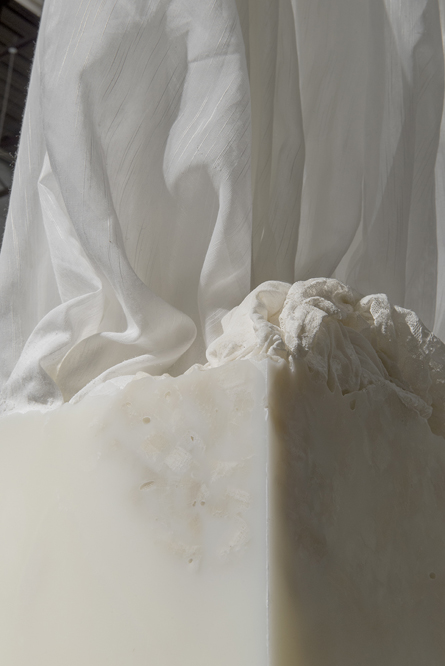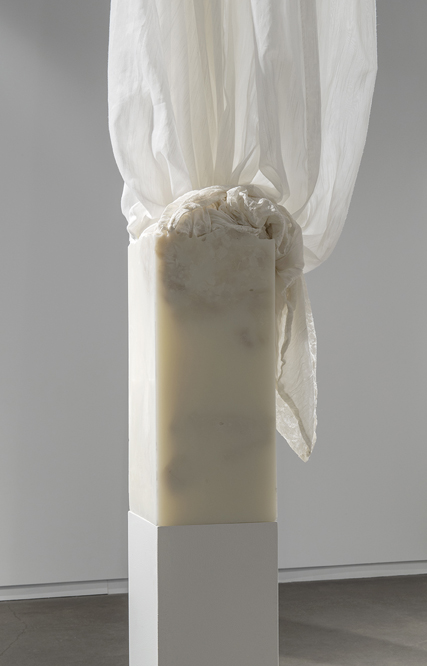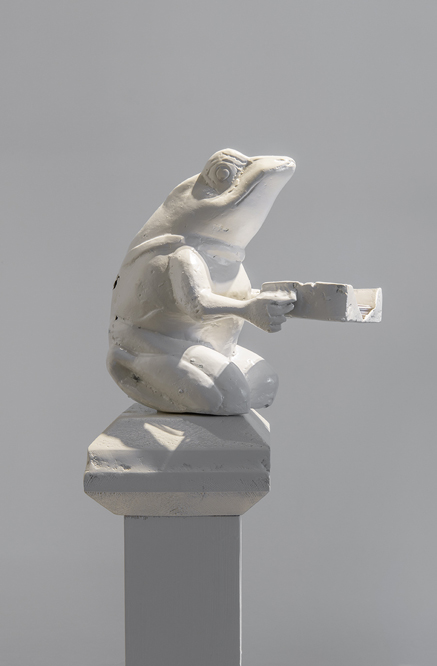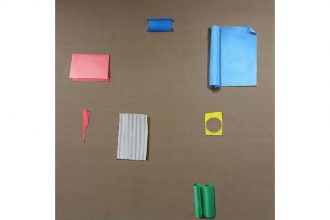It’s not easy to write about Iris Häussler. I’ve been avoiding it, though desiring it, since her daring He Named Her Amber (2008) subsumed the Art Gallery of Ontario’s Grange mansion in an immersive – some would say manipulative – installation that the public fell for, and then many resented. Its difficulty isn’t that she demands a lot of her audience (curator David Moos terms her viewers “volunteers” for this reason), though she does, and, it might follow, all the more so of her critics. Rather, the difficulty lies in her losing proposition: if we try to explain her practice, following our engagement in her palimpsestic environments and their storied relics, we risk losing the very thing we sought and thought we held. With Häussler, the first one to blink concedes their pass to enter. And when we forfeit that permit, as with one who surfaces from an underground card game only to snitch on the operation, we relinquish our complicity and our prized participation. A feeling of shared experience is reduced to mere design.
Luckily I held off on writing about Häussler until she changed her proposition. After twenty years of presenting her work under heteronyms (fictive identities), she’s reclaimed her authorial name in a “coming out” exhibition that’s aptly deployed in spilt drapes and erupting cloth. She is, too, working in abstraction for the first time since her start in Germany’s 1980s academe. While still tendering her signature forms and storied materials (wax cubes that house found, worn fabrics), her molten bricks now release their subjects in loosely-guided, dreamy arabesques. Häussler’s patterned installation feels important, even symbolic, here. Her fabrics stream from their cells like material confessions, sometimes climbing to the ceiling where they swing around beams like children’s limbs on stair banisters after school-day’s end. Ethereal and revealing, Häussler’s latest exhibition lends image to a vulnerable admission in the sense that it is, arguably, the first time she’s presenting work under her given name. She is showing us her hand.
During an intimate studio visit in late June, Häussler demonstrated an unnerving self-awareness when describing this latest series. She admitted that, when reading a book, she always wants “to know about the people behind [it]. I turn to the back, the picture and the little bio, and I think [smacks table], ‘it doesn’t matter, it’s about the content!’ But I catch myself wanting to know the person who wrote this. Was she born in 1970? Or … ? And then I realized, ‘oh you’re always trying to hide that. It’s not really fair’. And then I thought, ‘what are you actually giving away?’” She continues, her voice pitched to perform her revelation, “And how arrogant is that? I [used to think], it shows little ego to put the work in front [of the artist]. But then I thought, ‘It’s actually big ego, it’s protecting your ego’. It brought me to an inner conflict and released something.”
“Release” is a crucial term in experiencing this exhibition. Presented by her long-time gallerist Daniel Faria, Häussler’s assembly of fastened, gestural sculptures delivers something like emancipation from her history of complex and nettled narratives. In place of fixed storylines we’re offered generous, balletic contours. In place of suggested reading we’re given a blank, inviting space. What potentially moors this yawning work to narrative, however, is dependent on our prior knowledge. If you’ve experienced He Named Her Amber, for instance – something that’s unforgettable – you might, upon entering this aerial installation, observe Häussler’s wax forms as buried bodies, sketched histories, submerged narratives, or controlled secretions. If you haven’t seen her previous work, however, you might simply observe a lyric mileage of material, a ludic play on descriptive form. In taking this chance on her reception, Häussler remits a previously controlled authority. It’s a particular brand of irony that this occurs as she finally admits herself as “author.”
In his text on Häussler’s Amber intervention, organizing curator David Moos relates her practice to the Polish theater director Jerzy Grotowski, who preferred rehearsal over performance when developing his fictive realities. Describing Häussler’s “archeological scene” at the AGO – a staged excavation site carved into the museum’s adjacent mansion, one that, under Häussler’s direction, revealed talismans, letters, bones, and maps alluding to a secreted narrative as illuminated by apprised, complicit docents, each establishing a slightly individualized script – Moos writes, “If the idea of rehearsal is commonly understood as a practice or a trial for a play to be performed later for the public, Häussler’s work comprehends rehearsal as a self-fulfilling process, a continuous action.” He reminds us of her repeated assertion that “the Art Gallery of Ontario has always used the assumption of the museum to tell people whatever it chose,” a defense that she likely first issued when met with an aggrieved public at the museum’s urging (“legs swinging,” she tells me, as she sat on the stage’s edge, “waiting for the tomatoes to flow”), and likely many times after, when she took it upon herself to call each visitor that left their number in a submitted grievance, to better understand the issue, and atone.
If, as Moos suggests, Häussler delivers her fictions through constant rehearsal, it could be argued that this recent body of work provides something akin to a “set” – a stage that is furnished, decorated, and unpeopled. But I would disagree. This new turn in Häussler’s practice (what is, arguably, a return to her roots, first established in Munich), delivers something so much more exposing than what has come before that it reads like an actor arriving at a spontaneous “truth” in the midst of a performance. It takes a lot of nerve to “come out” like this; to return from the safeguard of narrative bodies to abstract form. What I find interesting, though, is that, even with this (reclaimed) abstraction, Häussler still imparts her work in narrative stages. First wax, then fluidity; first entrapment, then release. She’s holding fast to a certain control, a staggered dispatch of content.
My disappointment is that this show begins with a figurative form – the titular subject in its title, Ask the Frog – who’s perched on a plinth and holding a shallow pocket of cards that bear the German terms for curiosity, time, sharing, closeness, joy, devotion, tenderness, transformation, attention, and hope, among others. They are, as critic Richard Rhodes notes, “all states of being, states of becoming or, depending on your inclination, states of disappearing.” It feels like an inclusion that should have been edited out. It’s a handicap, a lean-to, for Häussler, who didn’t resist the inclination to direct us through a show that should only invite our drifting. However, passing this, and attempting to disregard it, we see that she’s managed to do something still more vulnerable than the significant amount she’s laid bear before. She’s returned narrative to form with her own two hands, with her own two names – Iris Häussler.

































